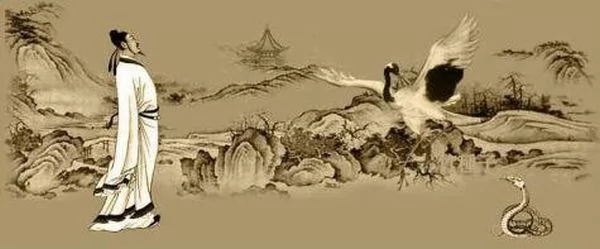Tai Chi Chuan’s history is a tapestry of legend, philosophy and practical evolution, stretching back centuries. While precise origins are debated, Tai Chi’s development reflects the interplay of Daoist principles, martial arts traditions and cultural shifts in China from its earliest roots to the 19th century.
The origins of Tai Chi are often traced to the Daoist hermit Zhang Sanfeng, a semi-mythical figure said to have lived between the 12th and 14th centuries. According to legend, inspired by observing a crane and snake in combat, Zhang developed a martial art emphasising softness, balance and internal energy (Qi). His system blended Daoist concepts such as Yin-Yang harmony with martial techniques, prioritising fluidity over brute force. While historical evidence for Zhang’s role is scarce, his story anchors Tai Chi’s philosophical foundation in Daoism, which emphasises living in harmony with nature and cultivating inner stillness.
By the 16th and 17th centuries, martial arts in China were flourishing, with various styles emphasising external strength and speed. Tai Chi, however, emerged as an “internal” art, focusing on mindfulness, breath control and energy flow. Its early forms were likely practiced in secrecy by small groups, often within families or monastic communities. The village of Chenjiagou in Henan Province became a pivotal centre for Tai Chi’s development. Here, Chen Wangting, a 17th-century military officer, is credited with formalising the first Tai Chi system. After retiring from service during the Ming-Qing transition, Chen combined his martial expertise with Daoist breathing techniques and classical Chinese medicine principles. His routines, blending slow, deliberate movements with explosive strikes, laid the groundwork for what we now recognise as Tai Chi Chuan.
Chen’s system, known as Chen-style Tai Chi, remained a closely guarded family tradition for generations. It integrated silk-reeling movements – spiral motions mimicking silk thread unwinding – with dynamic footwork and combat applications. The Chen family refined these techniques, passing them down through rigorous training. By the 18th century, Chen-style Tai Chi had evolved into a comprehensive system, incorporating forms, push-hands exercises and weapons training, all rooted in the principle of balancing softness and strength.
In the 19th century, Tai Chi began to spread beyond Chenjiagou. A key figure was Yang Luchan (1799-1872), a student of Chen Changxing, who brought Tai Chi to a wider audience. Yang, originally an outsider, learned the Chen family art and later developed his own style, Yang-style Tai Chi, with an emphasis on softer, more accessible movements. His teachings in Beijing attracted the imperial court and urban elites, marking Tai Chi’s transition from a village martial art to a practice with broader cultural significance. Yang’s adaptations made Tai Chi more approachable, paving the way for its global spread.
By the end of the 19th century, Tai Chi had diversified into distinct styles, with Chen and Yang as the most prominent. Its evolution reflected China’s philosophical depth, martial heritage, and growing emphasis on health and self-cultivation. For modern Tai Chi students, understanding this history underscores the art’s roots in balance, resilience, and harmony – principles as relevant today as they were centuries ago.
References
Henning, Stanley E. “The Chinese Martial Arts in Historical Perspective.”Military Affairs 44:4 (2000): 173-79.
Wile, Douglas. Lost T’ai-chi Classics from the Late Ch’ing Dynasty. State University of New York Press, 1996.
Further reading
Griffiths, Andrew. Zhang Sanfeng – Legendary Founder of Tai Chi Chuan. 2023. https://www.historyoffighting.com/zhang-sanfeng.php (accessed 30 May 2025)
Saints & Sages Part VII: Zhang San Feng (b. 1247.) Purple Cloud Institute. 2019. http://purplecloudinstitute.com/saints-sages-part-vii-張三豐-zhang-san-feng-1247/ (accessed 30 May 2025)
Wile, Douglas. The Many Lives of Yang Luchan: Mythopoesis, hopoesis,
Media, and the Martial Imagination. Martial Arts Studies. Cardiff University Press. 2023. https://mas.cardiffuniversitypress.org/articles/10.18573/mas.167 (accessed 30 May 2025)
Image courtesy of Alchetron Free Social Encyclopedia for the World. Zhang Sanfeng. 2024 https://alchetron.com/Zhang-Sanfeng (accessed 30 May 2025)


Leave a Reply